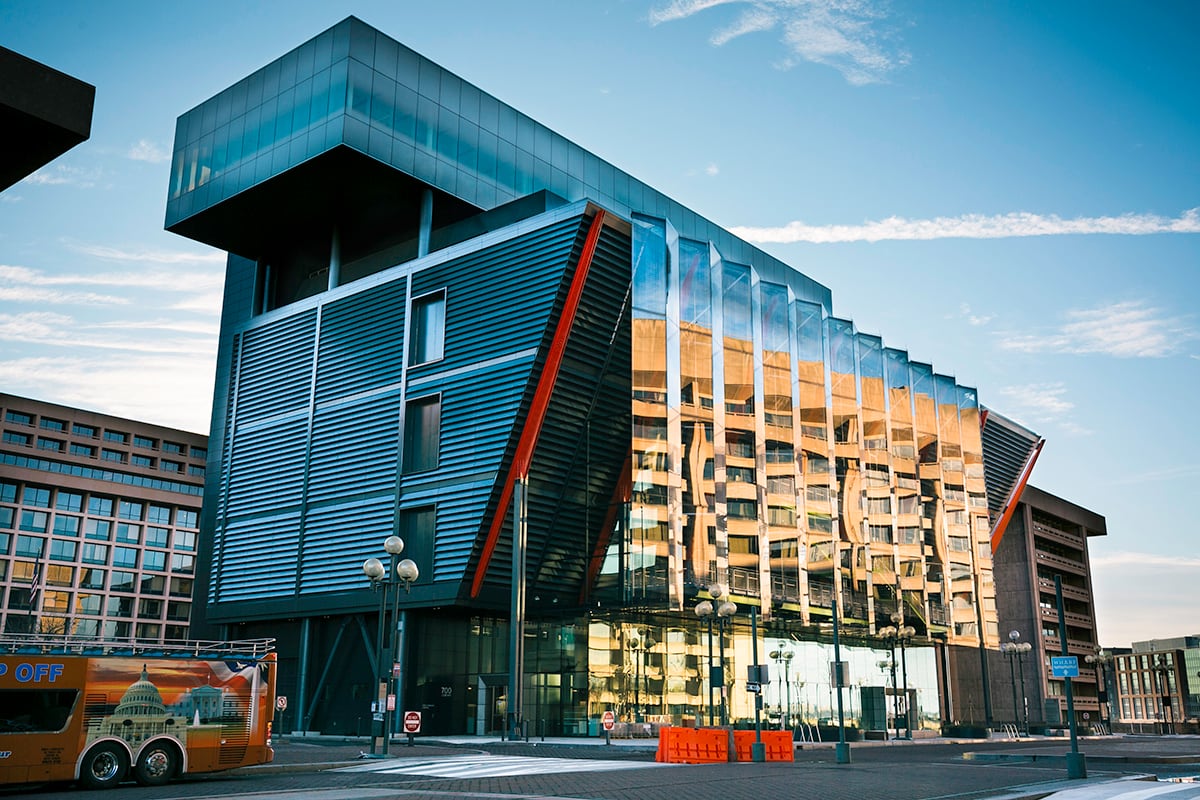The U.S. military is beefing up its presence in the U.S. Central Command region in reaction to what the Pentagon calls “indications of heightened Iranian readiness to conduct offensive operations against U.S. forces and our interests.”
But as with the run-up to Operation Iraqi Freedom, decisions to send the aircraft carrier Abraham Lincoln, the amphibious docking ship Arlington, B-52H bombers and a Patriot missile battery to the region raises questions about whether the intelligence behind the moves is valid and accurately interpreted.
Specific answers to those questions won’t be found in the new International Spy Museum, but those who visit the 140,000 square foot historical repository at 700 L’Enfant Plaza that opened Sunday will be better armed to ask informed questions, said Christopher P. Costa, its executive director.
“A more informed public is going to be armed to ask better questions,” Costa said in an interview with Military Times during the gala ribbon cutting reception Saturday night.
RELATED

Costa knows a thing or two about the nexus between intelligence collection and military actions.
A retired Army colonel who spent decades in intelligence, Costa most recently served as special assistant to President Donald Trump and senior director for counterrorism on the National Security Council at the White House from 2017 to 2018.
The museum, dedicated to the art and science of intelligence gathering, is not merely a propagandistic compendium to triumph, Costa noted.
“We do talk about the run-up to the war,” he said of the days before the March 2003 invasion of Iraq launched in large measure over concerns, since refuted, that Saddam Hussein had weapons of mass destruction. “We do show failures. This isn’t just a museum that focuses on feel-good successes in the community. We talk about intelligence failures. “

Successes are also addressed, of course, like the exhibit on the May 2011 raid in Pakistan that killed al-Qaida leader Osama bin Laden.
And while nobody at the museum is going to talk about ongoing, classified operations like what’s taking place in the CENTCOM region, there are plenty of opportunities to get an up-close look at the various “ints” employed by the intelligence community — human intelligence, signals intelligence and geospatial intelligence, among others — to gather that information.
Visitors can get a better idea of how the intelligence sausage is made when you walk through this museum and see gadgets used for collection and the stories of "how are all sorts of analysts in the intelligence community put together pieces of material that have been collected from various technical means or overhead means,” said Jill Singer, a museum board member and AT&T’s Vice President for National Security, Public Sector and Wholesale solutions.
“All of that technology that you’re going to see here, combined with the human brain power, is what we will be bringing to bear as a nation on figuring out what to do about Iran, or any other country,” said Singer, who spent years in the intelligence community as a director or deputy director of information.

The gadgets are among the coolest things in the museum. Most are real, like the KGB lipstick pistol, microdot cameras and hollow coins.
But maintaining its nod to pop culture, which has helped to drive so much interest in the museum that it had to find a new, larger space, are movie and television props. In the main entrance, for instance, is a silver Aston Martin DB5, one of those featured in the 1964 James Bond thriller “Goldfinger.” Fully loaded with machine guns, tire slashers, bulletproof windshield, oil jets, dashboard radar screen and a rotating license plate, the car is the ultimate testament to life imitating art. It inspired intelligence agencies to install similar devices into vehicles used in dangerous areas, according to the museum.
More than just the world’s largest collection of international espionage artifacts ever placed on public display, the museum offers educational programs and interactive experiences like “Operation Spy,” an hour-long immersion where participants take on the role of U.S. intelligence officers on an international mission to locate a missing nuclear device before it falls into the wrong hands. There is also meeting and conference space and the eighth floor rooftop conference room offers sweeping views of the DC waterfront, Washington Monument and the Capitol.
If you are heading to the museum, prepare to be awed. And bring your questions.
"Our mission is to educate the public,” said Costa. “And so that they leave here with more questions than answers, but they know the questions to ask.”
Howard Altman is an award-winning editor and reporter who was previously the military reporter for the Tampa Bay Times and before that the Tampa Tribune, where he covered USCENTCOM, USSOCOM and SOF writ large among many other topics.
